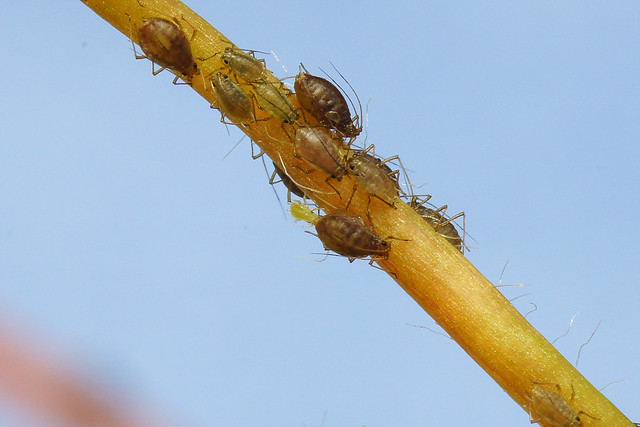Personal
Review: I love Argentinian wines. This tastes like cherries rolled around on the bottom of my shoe. But I like it. Fruit forward, so maybe throw in some plums and blackberries. Yeah- like jammy dirt. That's the jam. Would probably be great as a Sangria with some apples, oranges, and pineapple. Solid jammy, fruity, plummy flavors with a little peppery spice on top. Delish with chicken even though I don't eat chicken. Would probably pair well with a lighter casserole dish or vegetable medley. No food was taken with this wine.
Grape Varietal Blog Entry #3: Sangiovese
Sangiovese
is grown notably in places such as Montalcino, Emilia-Romagna, Sicily, Abruzzo and Marche regions. Argentina has also been found to grow Sangiovese in the Mendoza region. However, the principal region
where Sangiovese is grown is Tuscany. Sangiovese is the defining grape of Italy. Archeological theory suggests that this varietal originated in Romagna in the Town of Santarcangelo. This is where the Romans supposedly would store the wine in Grotte Tufacee (or really awesome grotto caves) inside the Mons Jovis. (1) Including the major
regions that grow Sangiovese, the total worldwide acreage is about ~175,000 acres.
(2) Sangiovese occupies more vineyard acres than any other variety in Italy,
totaling 155,000 acres under vine. (2) It is the most widely grown grape in Italy, comprising about 10% of the vineyard area. (7) Some versions of Sangiovese and Barbera pop up in California and elsewhere.(4) The Cal-Ital movement in California has also led to growing plantings of
Sangiovese. By 2011, Sangiovese was the 17th most planted red variety
in California. (12) Sangiovese mutates easily, and therefore has many clones. The
most notable being Brunello, of Brunello di Montalcino fame. (5)


Some common descriptors of tart cherry, red plum, strawberry, fig, roasted pepper, tomato, leather, clay, brick, tobacco, smoke, oregano, thyme, dried roses, and potpourri. (3) It has high
acidity and a thicker skin. While being a thick skinned grape, Sangiovese has a slightly higher tannin content but this is usually because it is barrel aged in oak. Oaked Sangiovese has these higher tannin qualities. They are known for their high acidity and smooth texture. It is these characteristics that make a Sangiovese-based
wine very food friendly. Not unexpectedly, they pair well with tomato
sauce based pastas, pizzas, and dishes and can also go well with roasted
chicken and grilled meats. (8) Foods that are often paired with Sangiovese are mild to strong to very strong cheeses, seafood in heavier cream sauces, particularly if they are red or brown. Salmon, poultry, game bird, heartier pastas, beef dishes, barbecues, duck, goose, grilled pork, Italian sausage, pork roast, lamb, cold cuts, and a solid good pizza are also good matches for this varietal. (4)
 |
| Sangiovese Grape; Source: http://images.quickblogcast.com |
|
|
|
|
Sangiovese
is savory. Because of its ability to be a chameleon, Sangiovese wines offer a
wide range of tastes from very earthy and rustic. This is the case with many
Chianti Classico as well. Sangiovese can also have round and fruit-forward
tastes as well. As said before, Sangiovese is a versatile grape that spans the entire
length of the quality spectrum, from low-end Chianti to top-shelf Chianti
Classico. (6) If not cared for correctly, the grape will produce a wine overly
acidic with unripe fruit flavors. (5) It requires a long growing season, as
it's early to bud and late to ripen. In cooler years, these tendencies can lead
to high acidities and harsh, unripe tannins. (7) Not very pleasing to the
palate to say the least. Regardless of where it’s grown, it always exhibits
cherry flavors with more subtle notes of tomato. (2) These are two of my
favorite things so naturally, Sangiovese is typically a good choice for my
palate.
There is a tendency to want to “improve” Sangiovese by adding small components
of other grapes. So many wine makers do this and its not just with the
Sangiovese grape. Cabernet Sauvignon, for example, adds rich saturation and
structure to Sangiovese’s thinner appearance. (6) Merlot can add
"lushness" and softness to Sangiovese's sometimes acidic,
"thorny" traits. (6) The problem is, winemakers are not always
legally allowed to blend other grapes, depending on laws determined by local
authorities. For example, in Chianti Classico it is legal to do so; its wines
are defined as being minimum 80% Sangiovese. (6)
|
|
Sangiovese
also plays a major role in the huge category of wines known as Super Tuscans.
These were the beloved varietals of the wine world from the 90s through the
early 2000s, produced by some of Italy's historically significant wineries.(7)
Since late last year a prosecutor has been investigating whether some of the
major producers of the wine, brunello di Montalcino, have been violating
the laws that determine whether their product can bear that name, the most
prestigious among all Tuscan wines. (11) The prosecutor has impounded more than
a million bottles from some of the most prominent Italian winemakers. This
includes Antinori and Frescobaldi. They will remain impounded until he determines
whether they used unapproved techniques or grapes other than brunello, the
local name for sangiovese, supposedly to give their idiosyncratic wine a
broader international appeal. (11) Hot dang- who would have thought?
|
Some have said that the ultimate expression of Sangiovese is
the 100% Sangiovese from the Montalcino area in Tuscany, known as Brunello di
Montalcino. Montalcino is a relatively warm and dry micro climate where the
Sangiovese grape can experience a longer growing period than virtually anywhere
else in Italy. (7) Brunello di Montalcino must be at least 70% Sangiovese.
Brunello DOCG regulations require that the wines be made exclusively from this
Brunello clone, and that the wines be aged a minimum of two years in barrel
(modernists tend to use more French barriques, while more traditional producers
mainly use the old Slovinian botti), and four years in total before going to
market. (7)

The hilly soil and the weather conditions of Tuscany are
ideal for grape growing and, with the passing centuries, the numerous types of
grapes grown gave rise to some rare and much loved varieties. Nowadays, the
most grown variety is the noble Sangiovese, which is often combined with small
amounts of locally grown Cabernet Sauvignon, Canaiolo, Ciliegiolo and other
grapes into blends such as the Brunello di Montalcino, Morellino di
Scansano, Carmignano and the signature Tuscan wines, the Chianti and Chianti
Classico. These are probably are the best known Italian wines in the world.
Other grapes grown here are the Mammolo, Malvasia, Colorino, Raspirosso, Gamay,
Grand Noir, Barbera, Moscatello, Aleatico and Vernaccia, among others.(9)

Tuscany accounts for over thirty DOC and half a dozen of
DOCG wines. In addition to the great, well-known and appreciated reds, the
local production includes a few distinguishable whites, the most notable among
them being, without doubt, the Vernaccia di San Gimignano. Other delicious
whites include the Bianco d'Elba, from the Elba Island, Bianco di Bolgheri, Vermentino,
Bianco di Pitigliano and Bianco di Val di Nievole. (Bianco in Italian means,
"white"). (9) Tuscan whites are largely indifferent. Most are made
from the lackluster trebbiano grape. Trebbiano is valued for use in cheap table
wine and as part of the traditional Chianti blend. One Tuscan white worth
noting is Vernaccia (wine and grape) from the San Gimignano region. At least
it’s better than trebbiano. (10)
Sources:
(1)http://finewinesource.net/tag/blend/
(2) http://winefolly.com/review/guide-to-sangiovese-wine/
(3)
http://www.thewinedoctor.com/advisory/tasteclassicgrapesred.shtml
(4) Boyer, John (2010-01-07). Drink This Now!: Step by step
lessons for the aspiring wine connoisseur (Kindle Locations 3373-3374). .
Kindle Edition.
(5) http://winestore.strykersonoma.com/sangiovese-c31.aspx
(6)
http://www.winemag.com/Wine-Enthusiast-Magazine/March-2011/Sangiovese/
(7)
http://www.huffingtonpost.com/richard-jennings/sangiovese-italys-most-ub_b_1343854.html
(8) http://www.wine-road.com/education/grape-varieties/sangiovese-grape.php
(9) http://www.winecountry.it/regions/tuscany/
(10)
http://topics.nytimes.com/topics/reference/timestopics/subjects/w/wines/tuscany/index.html
 The book also talks about the strike of phylloxera. Just as a little review, phylloxera is a burrowing plant louse that destroyed the vineyards of France at the end of the 19th century. Buzz kill! This was also another import from America (can't be all too proud of that). The cure also came from America though when the native American vine rootstock was found to be resistant to the louse. All French vines had to be ripped up and burned, with new vines grafted onto the American rootstock (amazing- we ruin the day and then save it. 'Murica!) Black rot is another fungal disease that attacks grapevines. This sucker leaves black spots on the green parts of the plant and causes the fruit to shrivel up. Black rot is most "virulent" in warm weather and high humidity. The cure for this fungal disease is a solid treatment of copper sulfate. The last one that we haven't covered in class was oidium. This is another mildew, but its powdery (more true mildew). It came from America and the best method and product to combat oidium was ground sulfur.
The book also talks about the strike of phylloxera. Just as a little review, phylloxera is a burrowing plant louse that destroyed the vineyards of France at the end of the 19th century. Buzz kill! This was also another import from America (can't be all too proud of that). The cure also came from America though when the native American vine rootstock was found to be resistant to the louse. All French vines had to be ripped up and burned, with new vines grafted onto the American rootstock (amazing- we ruin the day and then save it. 'Murica!) Black rot is another fungal disease that attacks grapevines. This sucker leaves black spots on the green parts of the plant and causes the fruit to shrivel up. Black rot is most "virulent" in warm weather and high humidity. The cure for this fungal disease is a solid treatment of copper sulfate. The last one that we haven't covered in class was oidium. This is another mildew, but its powdery (more true mildew). It came from America and the best method and product to combat oidium was ground sulfur. 






































